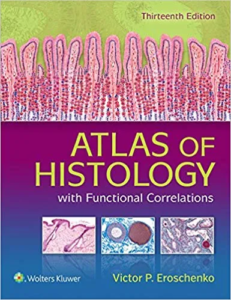Second Year Anatomy OSPE:
Cerebellum OSPE:
This Objective Structured Practical Examination (OSPE) station focuses on the cerebellum, the part of the brain that controls balance, coordination, and voluntary movements. We expect students to identify and understand the cerebellum’s various structures, functions, and pathological conditions.
Commissural Fibers Brain Stem OSPE:
This OSPE station will ask students to demonstrate their knowledge about commissural fibers in the brain stem, which are neural connections allowing communication between different parts of the brain. The identification, function, and potential disorders related to these fibers may also be part of this examination.
Ear OSPE:
This is a practical examination assessing students’ understanding of the ear’s anatomy, physiology, and possible pathologies. Identification and understanding of the structures of the external, middle, and inner ear may be required, including the auditory & balance systems.
End Phase OSPE Gross Anatomy & Histology:
This refers to a comprehensive OSPE that covers a wide range of topics covered in gross anatomy. It might be at the end of a semester or course, and could include identifying structures, explaining functions, and understanding the relevance of anatomical relationships and pathologies.
GI Module OSPE:
This Objective Structured Practical Examination (OSPE) focuses on the gastrointestinal (GI) system and assesses the students’ knowledge and understanding of the anatomy, physiology, and pathology from the oral cavity to the anus of the entire GI tract. It may require students to identify structures on anatomical models, discuss the functions of various parts of the GI tract, interpret histological slides, and comprehend common gastrointestinal diseases and conditions. Topics might encompass the esophagus, stomach, small intestine, large intestine, liver, gallbladder, pancreas, and related structures.
Head & Neck OSPE:
In this OSPE station, students are expected to demonstrate knowledge about the anatomy, functions, and potential disorders of the structures in the head and neck region. This could include muscles, nerves, blood vessels, bones, and specific organs like the brain, eyes, and ears.
Head Embryo OSPE:
This OSPE assesses students’ understanding of the embryological development of the head. This involves understanding the developmental stages, identification of key structures and their formation, and knowledge about potential developmental abnormalities.
Larynx OSPE:
This is a practical examination of the larynx, often called the voice box. Students should be able to identify the larynx’s various structures, understand their functions, and recognize common diseases and disorders of the larynx.
Liver OSPE:
OSPE station, students are expected to demonstrate knowledge about the liver’s anatomy, functions, and potential disorders. This could include the ability to identify hepatic structures, understanding of liver physiology, and recognition of hepatic diseases.
Microscopic Histology Slides Identification Points:
These are histology slides with specific identification points labeled, to help students learn to recognize and identify specific microscopic structures and tissues.
Microscopic Histology Slides without Identification Points:
Unlike the previous, these are histology slides without marked structures. They test the students’ ability to identify and describe various histological structures without aid, requiring a more in-depth understanding and recognition skill of histological tissues.
Pancreas OSPE:
In this practical examination, the focus is on the pancreas. Students are expected to identify and understand the anatomy and function of the pancreas, which includes both its exocrine and endocrine functions, as well as common diseases and disorders.
Perineum OSPE:
This is a practical examination focused on the perineum, the area between the pubic symphysis and coccyx in both males and females. This involves identifying its boundaries, understanding the underlying structures and their functions, and common pathologies.
Renal OSPE:
This OSPE station assesses students’ understanding of the kidneys (renal system). This may involve identifying the various parts of the kidney, understanding the process of urine formation, and recognizing common renal diseases and disorders.
Reproductive System Gross Anatomy:
This refers to the study of the macroscopic structures of the male and female reproductive systems. It includes identifying organs and structures, understanding their functions, and the physiological processes involved in reproduction. This could also cover potential pathologies related to the reproductive system.
Conclusion:
Summing up our extensive exploration, we have successfully covered succinct descriptions of a broad spectrum of OSPEs that play a significant role in the assessment of medical students’ knowledge and skills. This dialogue has thrown light upon the key aspects of these examination stations, fostering a better understanding of their purpose and what they might encompass. Our journey together underscores the comprehensive nature of these practical assessments, underpinning the intricate balance between theory and practice in medical education.


Pingback: Second Year MBBS : Past Paper - Acha Waqat